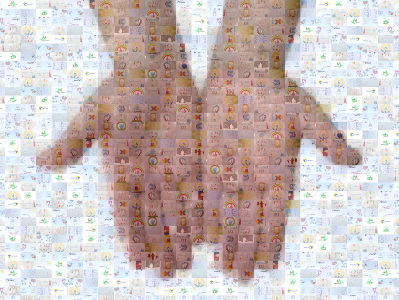Unfortunately, almost every child will experience at some point of his/her life, the loss of a beloved person...
Unfortunately, almost every child will experience at some point of his/her life, the loss of a beloved person. Even children, who do not go through such a difficult experience, they cannot avoid the daily contact with various cartoons, toys or books that refer to death.
Parents and Health Care Professionals (Psychologists, Doctors, Nurses, Social Workers etc.) can offer greater help if they can fully understand what each child, uniquely, understands about the meaning of death.
Since 1934, Doctors and Psychologists began conducting research on how children perceive death (Schiler & Wechsler, 1934). In 1948, a few years after World War II, Psychologist Maria Nagy completed one of the most famous studies on children who lived in Budapest. More specifically, she interviewed them on "what is death?" and asked their answer to be given in words or drawings.
Almost all studies performed -according to a review published in 1984 (Speece and Brent, 1948) - through interviewing children, with either opened or closed-ended questions, e.g. "Can you think of someone who might not die?", "Can a dead person come back to life?". Through reviewing the most recent bibliography and research, it seems that the main axes of perception that relate to how a child understands death can be categorized as follows:
• Irreversibility: death is a permanent event
• Non-functionality: all body functions cease after death
• Universality: all living things must eventually die
• Causality: causes of death
Every child perceives death differently and this mainly depends on: age, developmental level, psycho-emotional maturity, and his/her own unique way of perceiving such a complex term. Furthermore, important role in perception holds the child's relationship with the person who died. According to research, children perceive in each period of their life the following about death (Tsikoulas and Pavlou, 2003):
• Newborn to pre-school (until 3 years old): at this age they do not understand what death means, but they can sense that a significant person is missing as well as others' emotions through their behavior (e.g. sadness, anxiety, "detached" care of the child).
• Preschool age (3 to 6 years old): At this age they have not yet absorbed the concept of death and do not understand its irreversibility. Also, they believe that their thoughts and/or actions may cause death or bring someone back to life. They see death as a punishment for their bad behavior. Furthermore, they have difficulty in understanding abstract concepts, such as "heaven".
• School age (7 to 10 years old): At this age children begin to understand the finality of death through the absence of their significant person. Most children try to give a face to death, i.e. they might think that it's a spirit that shows up. Additionally, they are afraid that death is contagious and other loved ones will contract, resulting in the unpleasant event of death. Moreover, they feel guilty because they believe that they have the responsibility for death and they find it hard in understanding abstract concepts.
• Teenage years (11 to 18 years old): At this age children begin to perceive -like adults do- death and its irreversibility as well as the impact it may cause. They usually worry about how their life will change after the death of their loved one and they worry for their own death or someone else's loved one death.
It is worth noting that death perception differs from culture to culture, depending on the religious beliefs of the society, and thus some of the already-mentioned information may not apply to different religious approaches.
Although parents may fully perceive what their child understands about death, it does not mean that they can predict his/her reaction in case they will face such an experience. The only certain fact is that children will need their support, especially someone who will listen to their thoughts and reassure them that he/she can ease their pain and take away their fear.
References:
- Τσίκουλας, Ι., & Παύλου, Ε. (2003). Η προετοιμασία και η στήριξη του παιδιού στο θρήνο και στο πένθος. Παιδιατρική Βορείου Ελλάδος, 15, 256-261.
- Corr, C. A., Nabe, C. M., & Corr, D. M. (2009). Death & dying, life & living (6th ed.). Belmont, CA: Wadsworth Cengage Learning.
- Nagy, M. (1948). The child's theories concerning death. Journal of Genetic Psychology, 73, 3-27. (Reprinted with some editorial changes as "The child's view of death" in The meaning of death, pp. 79-98, by H. Feifel, Ed., 1959, New York: McGraw-Hill.
- Schiler, P., & Wechsler, D. (1934). The attitude of children towards death. Journal of Genetic Psychology, 45, 406-451.
- Speece, M. W., & Brent, S. B. (1984). Children's understanding of death: a review of three components of a death concept. Child Development, 55(5), 1671-1686.



